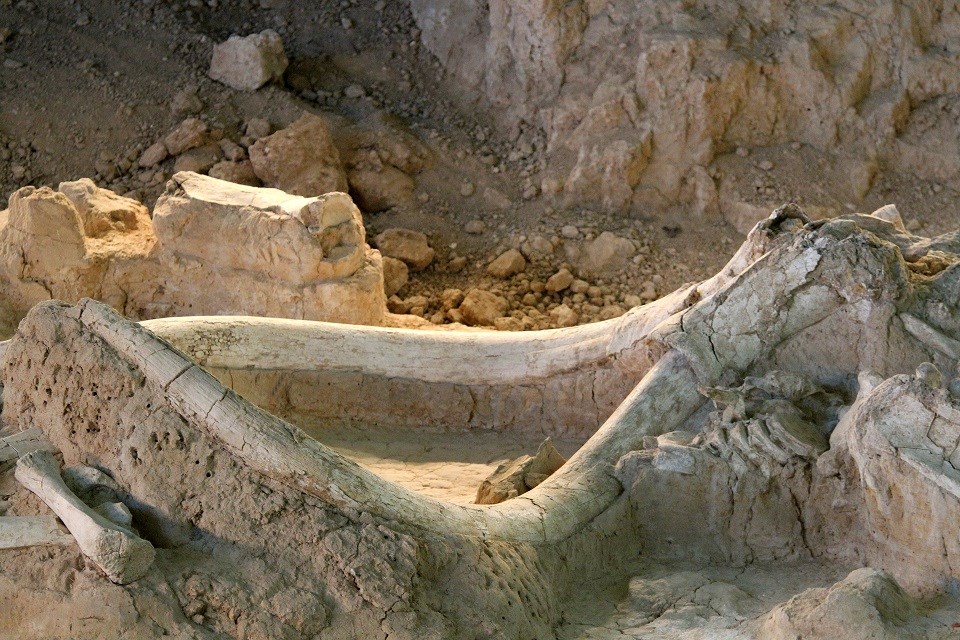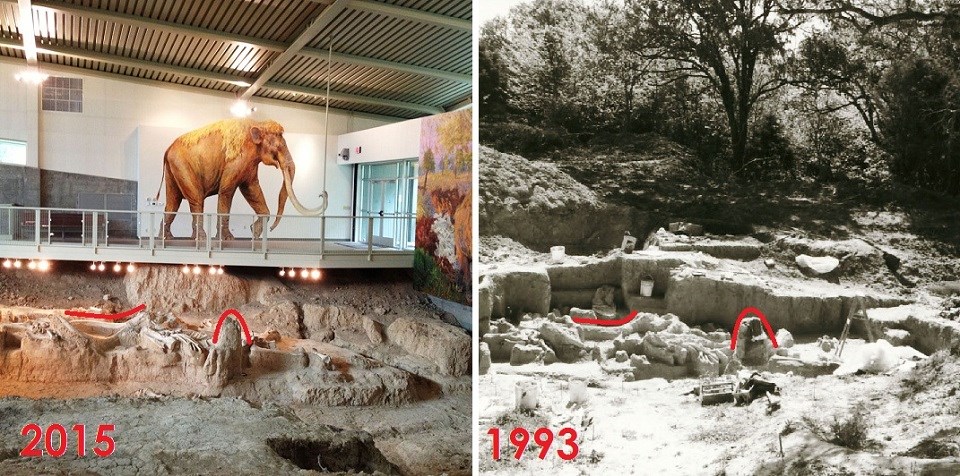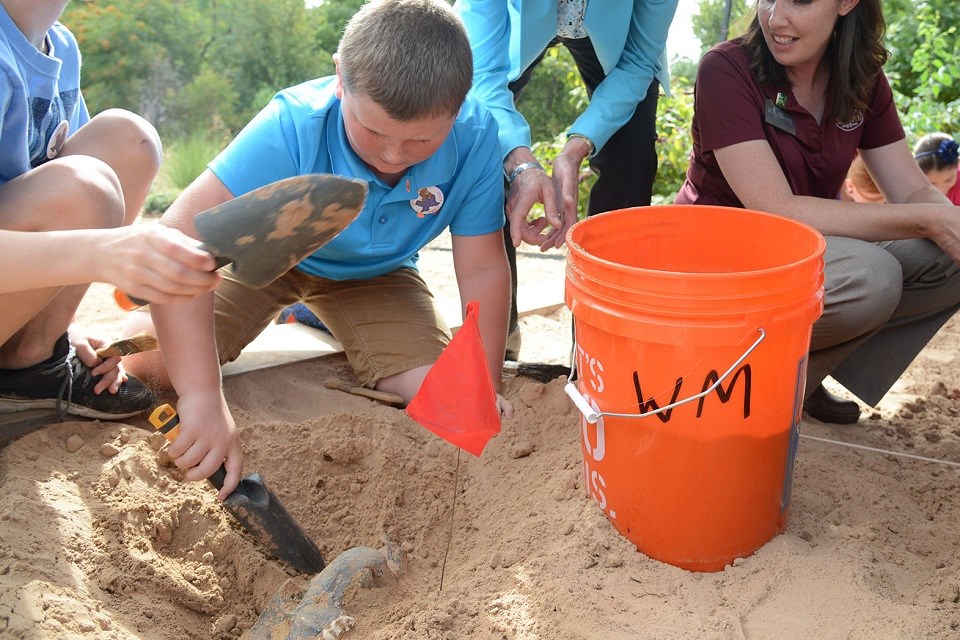Last updated: January 2, 2018
Article
National Park Getaway: Waco Mammoth National Monument
By Rachel Nelson, Park Ranger, Waco Mammoth National Monument

Image courtesy of City of Waco Parks and Recreation
The year was 1978. Two teenage boys were hunting for arrowheads in a creek bed on the outskirts of Waco, Texas. While they were unsuccessful with their pursuit for Native American artifacts that day, their quest would not go unrewarded. They would uncover a mystery so huge, you might even refer to it as a “mammoth-sized” find that was the only one of its kind!
That’s the story of how Paul Barron and Eddie Bufkin, both of Waco, accidently found the first Columbian Mammoth (Mammuthus columbi) bone at the site. Their good fortune led a team of experts and volunteers from Baylor University to uncover what the National Park Service refers to as “the nation’s first and only discovery of a nursery herd of Pleistocene mammoths.” So far, paleontologists have unearthed 24 Columbian mammoths, three camels, and a few other Ice Age creatures at what is now known as Waco Mammoth National Monument.

Photo by R. King / City of Waco Parks and Recreation (left); photo courtesy of Mayborn Museum Complex at Baylor Museum (right)
The real mysteries lie in why these animals chose to inhabit this area and what happened to them. Was it the climate that attracted them? Was it the landscape? What did they eat and drink when they were here? And the biggest questions of all, how and why did they perish? Visitors can enjoy guided ranger-led tours to see “in situ” remains (fossils left where they were discovered) and form their own hypotheses that may answer these questions. Rangers share information about when these animals were roaming around Central Texas and what Ice Age life was like for them.
Excavation at the site commenced in 1978 and was put on hold in 2001. Leaders within the City of Waco, Waco Mammoth Foundation, and Baylor University recognized the importance of preservation for the site. The partners’ mission was to protect the area and the fossil remains so future generations could enjoy them too. A successful fundraising campaign resulted in the Dig Shelter opening to the public on December 5, 2009. It is only one of two climate-controlled dig sites in the United States. At the same time, the partners appealed to Congress to declare Waco Mammoth a unit within the National Park Service. On July 10, 2015, President Barack Obama proclaimed the site as Waco Mammoth National Monument through the Antiquities Act. This designation provides the protections needed to continue the site’s education and preservation missions.

Photo courtesy of City of Waco Public Information
Guests can participate in guided tours of the dig site that begin every 30 minutes and last 45 minutes to an hour. No reservations are required and small tour fees do apply. Rangers lead visitors from the Welcome Center down a 300-yard paved path to the Dig Shelter. The tour path is 100 percent accessible without steep grades or stairs, and golf cart assistance is available if needed.
The site also features a half-mile nature trail, the Eagle Trail, a tenth-of-a-mile Deer Loop Trail, and a picnic area to enjoy lunch outside. Visitors often bring binoculars to spot birds and other wildlife while visiting the park. The young and young-at-heart can engage in educational activities, including the Waco Mammoth Junior Ranger Program. Check out the park’s online calendar for more information about programs and events.
Located just 7 miles northwest of downtown Waco, Texas, the site is easily accessed from I-35. While in town, be sure to visit the Mayborn Museum at Baylor University to discover more about paleontology in Central Texas, including a walk-in diorama of the Waco Mammoth site. Find more information about the park, including directions, and more interesting places to explore in the Waco area. We look forward to your visit!
